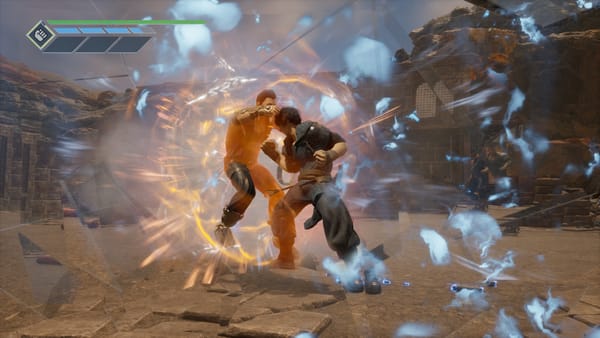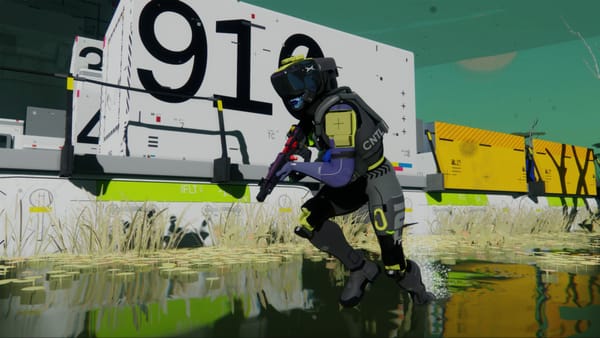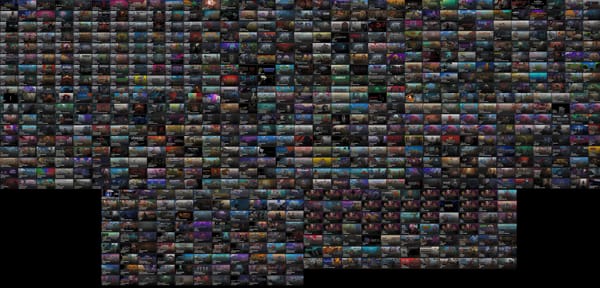#27: Disaster report
So, it is finally here, sort of but not really: the Nintendo Switch (OLED Model). Catchy! I’m sitting down to write this the morning after the unveiling of what, in the spirit of not-E3, must henceforth be known as the Switch not-Pro, and I am still quite cross with everyone involved. With those corners of the gaming press that appear to have got things very badly wrong. With myself, for allowing my daft brain to daydream about what seemed like a wonderful, unmissable new device. And above all at Nintendo, for making… well, whatever this thing is supposed to be.
The reported Switch Pro — 4K-compatible when docked, existing software tarted up by DLSS, an OLED screen boosting the handheld experience — was, on paper, a perfect expansion of the Switch ecosystem. The launch model was the hybrid all-rounder, finely complemented by the kid-friendly, handheld-only Lite. All that was missing was something that could make Switch sing a little better on modern TVs, and bring it more in line with modern technical standards. A DLSS-powered Switch Pro seemed like such a good idea, such a slam dunk. It felt like the logical course of action, which I suppose in hindsight was a fatal misunderstanding of how Nintendo tends to operate.
In its absence we have… this thing. The same console with a bigger and better, but still far from best-in-class, screen; more, yet still nowhere near enough, onboard storage; higher quality speakers, but still no support for Bluetooth headphones; a LAN port, genuinely marketed as a feature in the year of our Lord 2021; and a bigger and less breakable kickstand along the rear. Beyond that? Nothing. It is the same console with a few will-this-do improvements, and I have absolutely no idea who it is supposed to be for. Was anyone out there really holding out for so minor an upgrade as this? Will this persuade anyone still on the fence about Switch to finally hop off and get their wallet out? Who are these people, and where can I find them? I would rather like to sell them something.
The Switch is a wonderful thing. It is the console of Breath Of The Wild and Mario Odyssey, of Hades and Celeste, of Into The Breach and Slay The Spire. It is home to such quirky experiments as Ring Fit Adventure, the Labo line and Game Builder Garage. It has a number of excellent Picross games, and Picross is the best. Above all, it has put a company I have loved my entire gaming life back on track after the stumbles of Wii U and 3DS. But my word, what a disastrous muddle of an ecosystem it employs. What a dysfunctional family of consoles it has spawned. What a pain Switch can be to live with, and how much more painful it becomes over time.
The firstborn adored Ring Fit Adventure, but cannot play it on his Lite since it has no removable Joy-Cons (and no, father will not buy him another set, because he will only break them). We have spent many a pleasant hour building Labo kits together, but the not-Pro will not support any of them because it is 0.1 inches bigger. Nintendo has spent a chunk of the Switch era building great, innovative, truly different software that is full of potential and ripe, you would think, for further experimentation — then consigning it to history with its next hardware revision. Much was made a few years ago about Nintendo’s move to unite its previously disparate handheld and home-console development teams as it shifted its focus to Switch. On this evidence, its hardware and software divisions have been working in completely different timelines.
The Nintendo/Apple comparison is somewhat overplayed, but when I pictured how a Switch Pro might slot into my life, my reference point was the Apple TV. It was only when I got one of those, after having an iPhone and iPad for many years, that the broader Apple ecosystem truly clicked into place for me. Games, apps and media available on screens of all kinds and sizes, wherever I am in the world — remembering my purchases, my viewing history and where I was in a given game on whichever device I last played it on, and picking it up seamlessly. This is what Switch is like in my dreams. The reality is almost cruel by comparison.
Is yours a multi-Switch household? It is a miserable experience, despite the existence of a family membership for the Switch Online service, and a suite of (very thorough, admittedly) parental controls. It’s a long story, and painful enough that I don’t want to recount it in full (this Kotaku piece does a fine job of it), but here is the short version. In order to let my son play my digital games on his Switch Lite — and all my games are digital apart from, and I promise I am not making this up, Ring Fit and the Labo sets — I must accept that my launch model will only work when connected to the internet. If I ever get back on a plane again, I will not be taking my Switch with me, because it will be useless. It is now a permanently docked console, as good as housebound — hence my excitement, I suppose, for a 4K upgrade. And don’t even get me started on how Switch handles cloud saves between devices. God.
Look. Taken in isolation, the OLED Model is fine. It is better than the old one, games will look great on it, and it will no doubt sell well enough. Perhaps, when the teardowns begin, it will be found to contain some kind of power boost; perhaps the real Switch Pro is deep in development in Kyoto, and will make my dreams come true in due course. But these days consoles — and technology in general — are built not just on hardware and software, but on ecosystems; on how elegantly and invisibly their component parts knit together and weave themselves into the fabric of our daily lives, growing and improving over time. Switch is a wonderful console, certainly. But the more it ages, the messier it gets, and this new machine is no help in that respect at all.
MORE!
- Sticking with Nintendo for a moment: during a recent investor briefing the senior team were asked to name their favourite games. Company president Shuntaro Furukawa said Super Mario Bros. Strong Partridge vibes off that, eh.
- Pokemon Go is five years old, and has passed $5 billion in lifetime revenue.
- Mere months after the completion of its acquisition by EA, Codemasters’ CEO and CFO have announced their departure. That is an appropriately speedy exit.
- Amazon’s Lumberyard engine is going open source. At least now someone might ship a game on it.
- Assassin’s Creed is going all live-service-y, which makes sense: making these sprawling, 100-hour epics every two years surely can’t be sustainable. I’m particularly struck by the line in here about Ubisoft Quebec taking overall control of the project — that’s significant, given that Montreal has for years been the headline act at Ubi.
- Atari’s latest pivot: abandoning free-to-play, mobile and its casino operations to build “a strong pipeline of premium games on all platforms”. This will definitely end well.
Bit of a long one today, wasn’t it. Sorry. Be glad you didn’t see the first draft! As ever, if you’ve enjoyed this, do share it around. And perhaps you’d be so kind as to consider a paid subscription. See you on Friday, by which point I hope to have cheered up somewhat.





